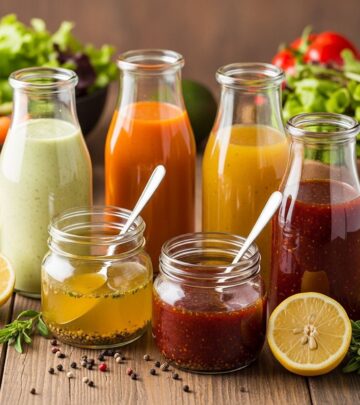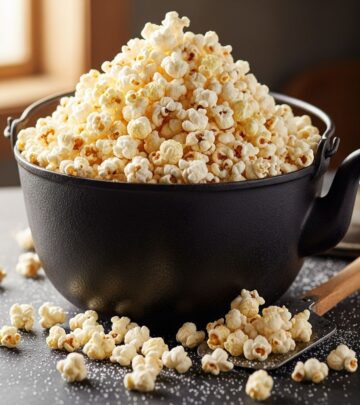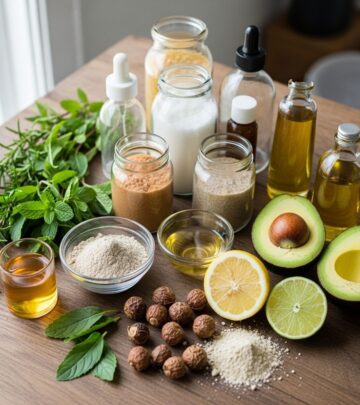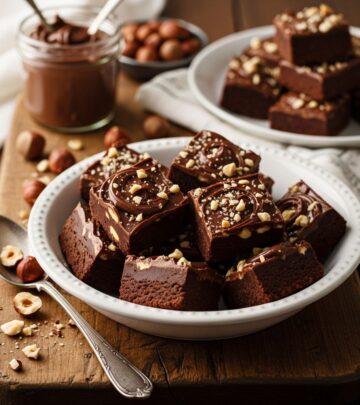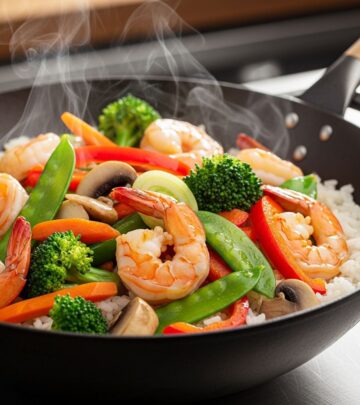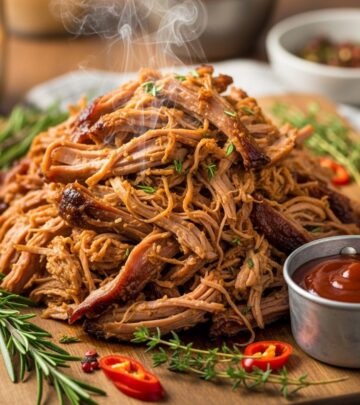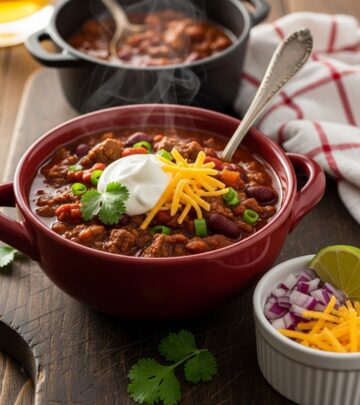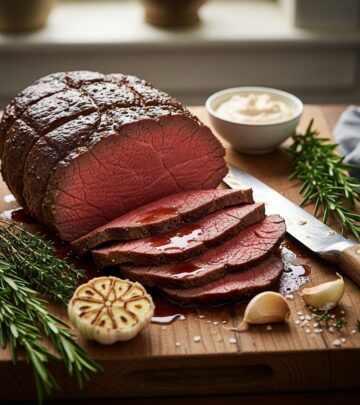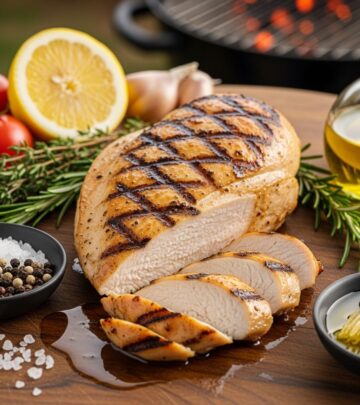Slow Cooker Corned Beef and Cabbage Recipe: Easy Irish Feast
Savor tender, flavorful bites with this hands-free recipe perfect for cozy gatherings.
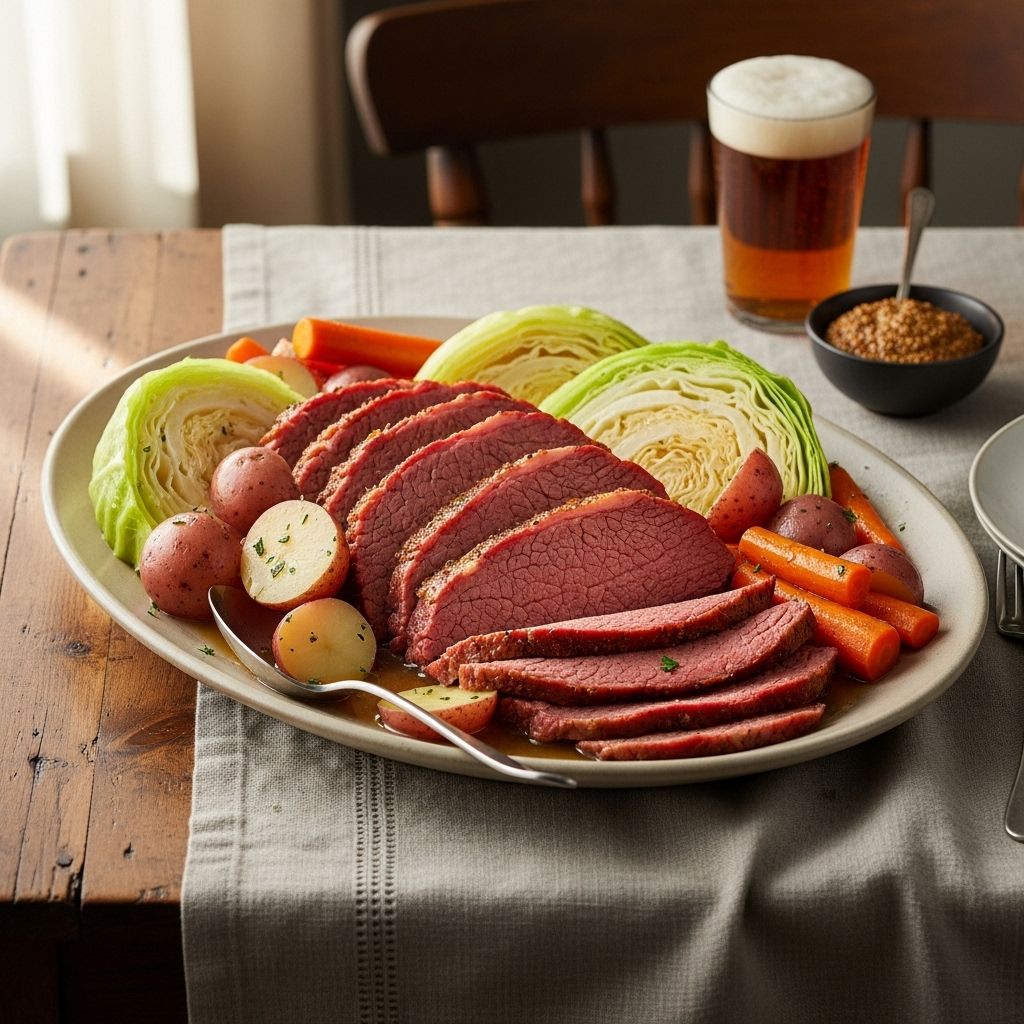
Image: HearthJunction Design Team
Slow-Cooker Corned Beef and Cabbage: The Effortless Irish Feast
When it comes to classic Irish-American fare, few dishes rival the hearty, comforting goodness of corned beef and cabbage. While traditionally associated with St. Patrick’s Day celebrations, this delectable combination of tender meat and vegetables deserves a spot in your regular meal rotation. The best part? By using your slow cooker, you can transform this iconic dish into an effortless feast that practically prepares itself while you handle your daily responsibilities.
This slow-cooker corned beef and cabbage recipe is truly foolproof – the kind of meal that delivers impressive results with minimal culinary expertise required. The long, slow cooking process ensures that the corned beef becomes wonderfully tender, while the vegetables absorb all the savory flavors from the meat and spices. Simply prep the ingredients in the morning, set your slow cooker, and return home to a perfectly cooked Irish meal by dinnertime.
Why Make Corned Beef and Cabbage in a Slow Cooker?
The slow cooker method offers several advantages over traditional stovetop or oven preparation:
- Hands-off cooking – Once you’ve added all ingredients, your work is essentially done
- Perfect texture – The low, steady heat breaks down the tough brisket fibers for fork-tender meat
- Enhanced flavor infusion – Hours of slow simmering allows flavors to fully develop and meld
- Energy efficiency – Uses less electricity than conventional cooking methods
- Convenience – Frees up your time and your stovetop for other tasks
Many home cooks find that the slow cooker method consistently produces superior results compared to other cooking techniques, especially when it comes to achieving that perfect balance of tenderness and flavor in the corned beef.
Essential Ingredients for Slow Cooker Corned Beef and Cabbage
The beauty of this recipe lies in its simplicity. You’ll need just a handful of ingredients to create a complete and satisfying meal:
The Vegetables
The vegetable base forms the foundation of this dish, providing both flavor and substance:
- Red Potatoes – Small red potatoes hold their shape well during the long cooking process. Quartered and unpeeled, they absorb the flavorful cooking liquid while maintaining their integrity.
- Carrots – You’ll need about two cups of matchstick-cut carrots (equivalent to four large carrots). These add natural sweetness and vibrant color to the dish.
- Onion – A large onion, cut into bite-sized pieces, adds aromatic depth to the cooking liquid.
- Cabbage – Half a head of cabbage, coarsely chopped, completes the vegetable medley. The cabbage is added later in the cooking process to prevent it from becoming overly soft.
The Protein
The star of the show is, of course, the corned beef:
- Corned Beef Brisket – This recipe calls for a 4-pound corned beef brisket, which typically comes with its own packet of pickling spices. The size is perfect for feeding a family with potential leftovers for sandwiches the next day.
The Liquids and Seasonings
These elements create the flavorful cooking environment:
- Water – Four cups of water provide the necessary cooking liquid for the vegetables and help create a moist environment for the meat.
- Beer – Six ounces of beer adds depth and complexity to the flavor profile. While Guinness stout is a traditional choice that complements the dish beautifully, any beer you prefer will work well.
- Spice Packet – The pickling spices included with the corned beef brisket contain the perfect blend of seasonings to enhance the dish. These typically include mustard seeds, coriander, bay leaves, and other aromatics.
Step-by-Step Cooking Instructions
Following these simple steps will ensure delicious results every time:
Morning Preparation
- Vegetable Prep: Begin by preparing your vegetables. Quarter the red potatoes (no need to peel them), cut the onion into bite-sized pieces, and measure out your matchstick carrots. For the cabbage, coarsely chop half a head and refrigerate it in a covered container, as you won’t need it until later.
- Layer the Base: Place the quartered potatoes in the bottom of your slow cooker, followed by the onions and carrots.
- Add Liquid: Pour four cups of water over the vegetables.
- Position the Brisket: Place the corned beef brisket on top of the vegetable layer. The meat should rest on the vegetables rather than sitting in the water.
- Add Beer and Spices: Pour six ounces of your chosen beer directly over the brisket, then sprinkle the contents of the spice packet evenly over the meat.
- Start Cooking: Cover the slow cooker with its lid and set it to cook on High for 7 hours.
Final Hour
- Add Cabbage: After the initial 7 hours of cooking, remove the chopped cabbage from the refrigerator and add it to the slow cooker. Gently submerge it into the cooking liquid.
- Complete Cooking: Replace the lid and continue cooking for one additional hour on High.
Serving
- Carving: Once cooking is complete, carefully transfer the corned beef to a cutting board. For the most tender result, slice the meat across the grain into thin slices.
- Plating: Arrange the sliced corned beef on a large serving platter surrounded by the cooked vegetables. Alternatively, serve family-style, allowing everyone to help themselves.
Tips for Perfect Slow Cooker Corned Beef and Cabbage
Enhance your cooking experience and results with these helpful tips:
Meat Selection and Preparation
The quality and preparation of your corned beef can significantly impact the final dish:
- Choose the right cut: Corned beef is typically made from brisket, which comes in flat and point cuts. The flat cut is leaner and slices more neatly, while the point cut has more marbling for extra flavor. Either works well in this recipe.
- Rinse before cooking: Some cooks prefer to rinse the corned beef under cold water before cooking to remove excess salt from the brining process. This is optional but can help control the saltiness of the finished dish.
- Fat side up: Position the brisket with the fat layer facing up so that it bastes the meat as it cooks, enhancing tenderness and flavor.
Flavor Enhancements
Customize the flavor profile with these simple adjustments:
- Beer selection: While the recipe suggests that any beer will work, different varieties will impart distinct flavors. A rich stout like Guinness adds deep, malty notes, while a lighter beer provides more subtle undertones.
- Additional seasonings: Feel free to supplement the included spice packet with extra bay leaves, peppercorns, or a tablespoon of brown sugar for added complexity.
- Garlic lover’s option: Add 3-4 cloves of peeled, whole garlic to the vegetable layer for an aromatic enhancement.
Cooking Techniques
Refine your approach with these cooking strategies:
- Size matters: Cut vegetables into similarly sized pieces to ensure even cooking.
- Timing flexibility: If your schedule requires, you can cook this dish on Low for 9-10 hours instead of High for 8 hours. The low-and-slow method often results in even more tender meat.
- Layer properly: Always place vegetables on the bottom and meat on top for proper heat distribution and cooking.
Serving Suggestions and Traditional Accompaniments
Complete your Irish feast with these traditional pairings:
Condiments and Sauces
Enhance the flavor of your corned beef and cabbage with these additions:
- Whole grain mustard: The slight sweetness and texture of whole grain mustard perfectly complement the savory corned beef.
- Horseradish sauce: A dollop of creamy horseradish sauce adds a pleasant heat that cuts through the richness of the meat.
- Apple cider vinegar: A small cruet of apple cider vinegar allows diners to add a tangy splash to their cabbage as desired.
Side Dishes
Round out your meal with these traditional accompaniments:
- Irish soda bread: This quick bread requires no yeast and pairs beautifully with the meal. Its slightly sweet, dense texture is perfect for sopping up the flavorful cooking liquid.
- Colcannon: For an extra-special feast, consider serving colcannon—mashed potatoes mixed with cooked cabbage or kale and plenty of butter—alongside your corned beef.
Beverage Pairings
Complete the experience with appropriate beverages:
- Irish stout: A glass of the same stout used in cooking makes for a harmonious pairing.
- Irish whiskey: A small measure of smooth Irish whiskey serves as both aperitif and digestif.
- Non-alcoholic option: Irish breakfast tea provides a robust alternative for those abstaining from alcohol.
Storing and Repurposing Leftovers
One of the joys of preparing corned beef and cabbage is enjoying the leftovers in creative ways:
Storage Guidelines
Properly stored, leftover corned beef and vegetables will maintain their quality for several days:
- Refrigeration: Store cooled leftovers in airtight containers in the refrigerator for up to 4 days.
- Freezing: For longer storage, freeze the cooled corned beef (separate from the vegetables) in freezer-safe containers for up to 2-3 months.
Leftover Transformations
Transform yesterday’s dinner into exciting new meals:
- Corned beef hash: Chop leftover corned beef and potatoes, then fry with diced onions until crispy. Top with a fried egg for a hearty breakfast.
- Reuben sandwiches: Layer thin slices of corned beef with Swiss cheese, sauerkraut, and Russian dressing on rye bread, then grill until golden and melty.
- Corned beef soup: Add chopped leftovers to beef broth with additional vegetables for a quick and satisfying soup.
Frequently Asked Questions (FAQs)
Q: Can I cook corned beef and cabbage in the slow cooker without beer?
A: Absolutely! You can substitute beef broth, apple juice, or additional water for the beer. Each liquid will impart a different flavor profile, but all will produce delicious results.
Q: My corned beef seems tough. What went wrong?
A: If your corned beef is tough, it likely needs more cooking time. Corned beef is a tough cut that requires long, slow cooking to become tender. Return it to the slow cooker with some additional liquid and cook for 1-2 more hours.
Q: Can I add the cabbage at the beginning with the other vegetables?
A: While you technically can add cabbage at the beginning, it’s not recommended. Cabbage cooks much faster than the other vegetables and will become overly soft and potentially mushy if cooked for the full duration. Adding it for just the final hour preserves its texture and color.
Q: Is corned beef and cabbage actually Irish?
A: Corned beef and cabbage as we know it is more Irish-American than traditionally Irish. In Ireland, bacon and cabbage was the more common pairing. Irish immigrants in America substituted the more affordable corned beef for bacon, creating the dish we now associate with Irish cuisine.
Q: What’s the best way to slice corned beef?
A: Always slice corned beef against the grain (perpendicular to the lines of muscle fiber) for the most tender texture. Cutting with the grain will result in chewy, stringy meat regardless of how well it’s been cooked.
Whether you’re preparing this dish for St. Patrick’s Day or simply craving a hearty, satisfying meal, this slow-cooker corned beef and cabbage recipe delivers consistent, delicious results with minimal effort. The combination of tender, flavorful meat and perfectly cooked vegetables creates a complete meal that’s sure to please family and friends alike.
References
- https://www.allrecipes.com/recipe/84270/slow-cooker-corned-beef-and-cabbage/
- https://www.allrecipes.com/recipe/237185/slow-cooker-corned-beef-and-cabbage/
- https://www.allrecipes.com/recipe/283287/easy-slow-cooker-corned-beef/
- https://www.allrecipes.com/recipe/283027/slow-cooker-corned-beef-cabbage-and-potatoes/
- https://www.youtube.com/watch?v=r2MJABXS1xk
Read full bio of Anjali Sayee

